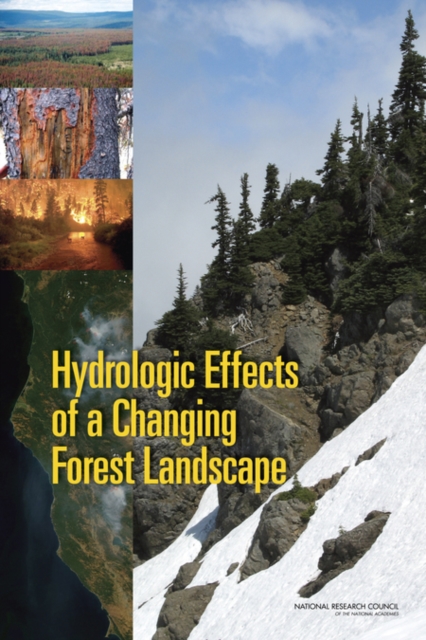
Hydrologic Effects of a Changing Forest Landscape Paperback / softback
by National Research Council, Division on Earth and Life Studies, Water Science and Technology Board, Committee on Hydrologic Impacts of Forest Management
Paperback / softback
- Information
Description
Of all the outputs of forests, water may be the most important.
Streamflow from forests provides two-thirds of the nation's clean water supply.
Removing forest cover accelerates the rate that precipitation becomes streamflow; therefore, in some areas, cutting trees causes a temporary increase in the volume of water flowing downstream.
This effect has spurred political pressure to cut trees to increase water supply, especially in western states where population is rising.
However, cutting trees for water gains is not sustainable: increases in flow rate and volume are typically short-lived, and the practice can ultimately degrade water quality and increase vulnerability to flooding.
Forest hydrology, the study of how water flows through forests, can help illuminate the connections between forests and water, but it must advance if it is to deal with today's complexities, including climate change, wildfires, and changing patterns of development and ownership.
This book identifies actions that scientists, forest and water managers, and citizens can take to help sustain water resources from forests. Table of ContentsFront MatterSummary1 Forests, Water, and People2 Forests and Water Management in the United States3 Forest Disturbance and Management Effects on Hydrology4 From Principles to Prediction: Research Needs for ForestHydrology and Management5 Recommendations for Forests and Water in the Twenty-First CenturyReferencesAppendix A: Institutional Governance and Regulations of Forests andWaterAppendix B: Committee Biographical Information
Information
-
Available to Order - This title is available to order, with delivery expected within 2 weeks
- Format:Paperback / softback
- Pages:180 pages
- Publisher:National Academies Press
- Publication Date:19/12/2008
- Category:
- ISBN:9780309121088
Other Formats
- PDF from £34.56
- EPUB from £48.59
Information
-
Available to Order - This title is available to order, with delivery expected within 2 weeks
- Format:Paperback / softback
- Pages:180 pages
- Publisher:National Academies Press
- Publication Date:19/12/2008
- Category:
- ISBN:9780309121088